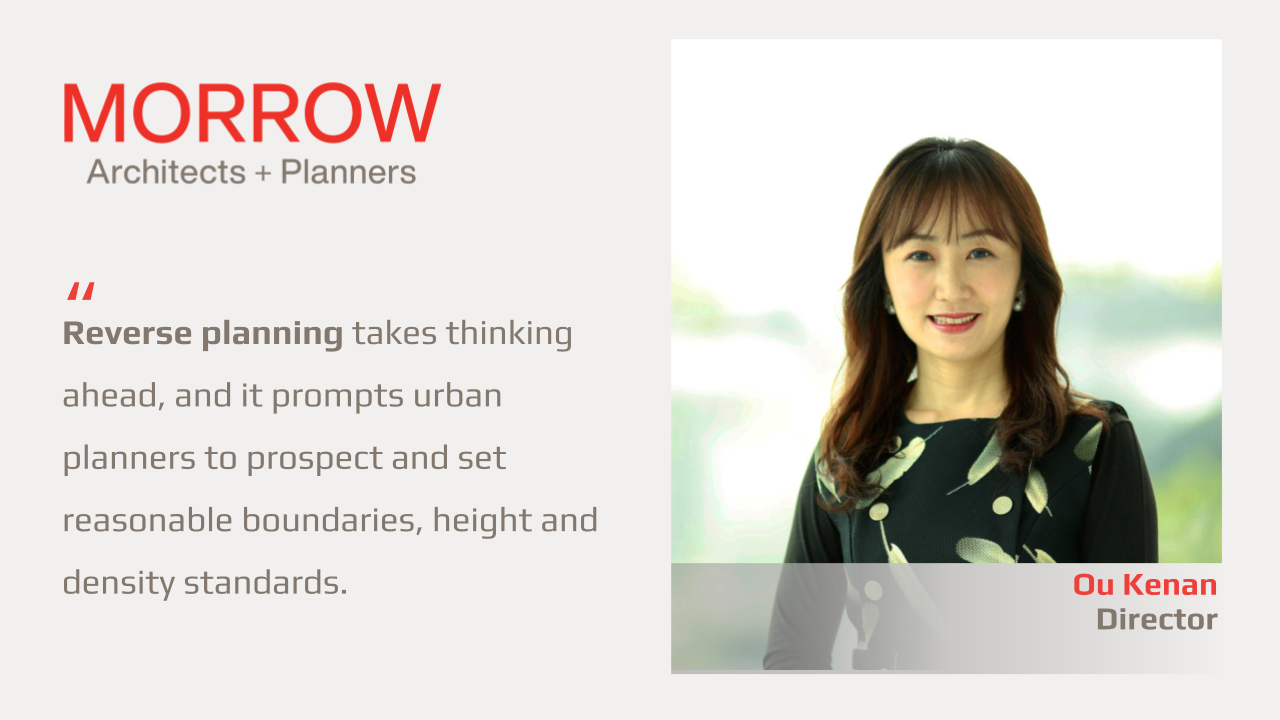Singapore – a tiny nation on the world map – has emerged as one of the role models in the development of liveable cities, achieved through decades of planning and construction. Despite facing the challenge of having a dense population, Singapore is still able to flourish without sacrificing its environment, or getting embroiled in issues that many cities grapple with due to rapid growth.
Can some of the unconventional urban planning practices that Singapore adopts be of inspiration to other cities?
Clockwise Construction vs. Reverse Blueprint
Time moves unidirectionally, and so does urban development. Does planning have to strictly follow the clockwise direction?
Singapore adopts the reverse blueprint approach, whereby an ultimate goal to be achieved within a certain timeframe will first be identified. The targets that shall be accomplished in the upcoming 10-15 years are then laid out in the next step. This reverse method helps to set the boundaries, densities, and building heights that are reasonable for long-term development right at the initial phase of the construction. The result is a reservation of sufficient public infrastructures, roads, and mass rapid transits for cities to progress in an orderly manner.
At the same time, a considerable number of problems can be avoided with the reverse blueprint approach. Issues such as the fickle and inconsistent nature of urban planning and construction, as well as narrow-sighted predictions, could lead to situations where an insufficiency of resources necessitates infrastructural changes every few years.
The rate of rebuilding HDB flats — Singapore’s public housing — is as low as 4% since the construction of these flats in the 1960s. Both the old and new towns are held to the same standard, and their densities are kept at an appropriate level. These measures reduce the costs incurred from making the wrong moves in urban construction. Do it right once and for all — high-quality construction saves cities from troubles in the future.
Limited Resources vs. Development Needs
Singapore is widely known for its severe lack of natural resources, with the exception of perhaps the sunlight and air. If we were to have assessed the city-state’s scale of development based on the resources owned, it would have been virtually impossible to foresee the nation’s population growing from 1.88 million when it first gained independence in 1965, to the present 5.5 million.
A country or city’s development is indeed influenced by the resources it possesses. However, Singapore has proven with its experience that goal setting for urban development should not be held back by resource limitations. Take Singapore’s water supply issue for example – the nation does not have any freshwater resources due to its land scarcity. As a result, Singapore started feasibility studies on wastewater reclamation and treatment to cope with this.
Currently, NEWater — the highly treated reclaimed wastewater produced by the Singapore Public Utilities Board — fulfils 40% of the nation’s water demand, and this percentage is set to continue increasing. Singapore receives water from its four national taps, namely, imported water, water from local catchment areas, desalinated water, and NEWater. Besides building diversified channels for water supply, Singapore also manages this precious resource comprehensively with various measures implemented, such as water conservation and recycling, water pricing control, and sustainable development.
In order to ensure successful urban development, Singapore squared up to its water shortage problem and brainstormed rationally for solutions, and this approach is worth some thought. As time progresses and technology advances, there will certainly be more ways to address the battle between resource constraints and developmental needs in the future.
Environmental Protection vs. Economic Development
At present, China has formulated strict environmental protection policies, which has stirred anxiety in many, as they worry about the possible adverse impacts the policies would have on the economic benefits of cities.
Protection and development seem to be a paradox that runs contradictory but the bigger question is, must these two elements always be mutually exclusive? Singapore was one of the most under-developed cities in Southeast Asia in the 1960s. It was even worse off than cities such as Yangon, Mandalay, and Ho Chi Minh City at that point in time, such that one would be able to correctly identify the Singapore River through its pungent odour. To revamp its national image in such a short time, Singapore established the goal of being a clean and green nation, with environmental issues being one of the main sections of focus. As a result, Singapore today is well-known for its conducive green environment and prosperous economy.
From the point of view of short-term investments, having lofty requirements for environmental protection will undoubtedly raise the cost of production, limit the industries that businesses can venture into, and elevate the barriers to entry. However, in terms of long-term development, the two elements go hand-in-hand, whereby a conducive environment will improve the overall value of a city, which in turn guarantees its economic progression.


